Opposing regulation of endolysosomal pathways by long-acting nanoformulated antiretroviral therapy and HIV-1 in human macrophages
- PMID: 25608975
- PMCID: PMC4307176
- DOI: 10.1186/s12977-014-0133-5
Opposing regulation of endolysosomal pathways by long-acting nanoformulated antiretroviral therapy and HIV-1 in human macrophages
Abstract
Background: Long-acting nanoformulated antiretroviral therapy (nanoART) is designed to improve patient regimen adherence, reduce systemic drug toxicities, and facilitate clearance of human immunodeficiency virus type one (HIV-1) infection. While nanoART establishes drug depots within recycling and late monocyte-macrophage endosomes, whether or not this provides a strategic advantage towards viral elimination has not been elucidated.
Results: We applied quantitative SWATH-MS proteomics and cell profiling to nanoparticle atazanavir (nanoATV)-treated and HIV-1 infected human monocyte-derived macrophages (MDM). Native ATV and uninfected cells served as controls. Both HIV-1 and nanoATV engaged endolysosomal trafficking for assembly and depot formation, respectively. Notably, the pathways were deregulated in opposing manners by the virus and the nanoATV, likely by viral clearance. Paired-sample z-scores, of the proteomic data sets, showed up- and down- regulation of Rab-linked endolysosomal proteins. NanoART and native ATV treated uninfected cells showed limited effects. The data was confirmed by Western blot. DAVID and KEGG bioinformatics analyses of proteomic data showed relationships between secretory, mobility and phagocytic cell functions and virus and particle trafficking.
Conclusions: We posit that modulation of endolysosomal pathways by antiretroviral nanoparticles provides a strategic path to combat HIV infection.
Figures
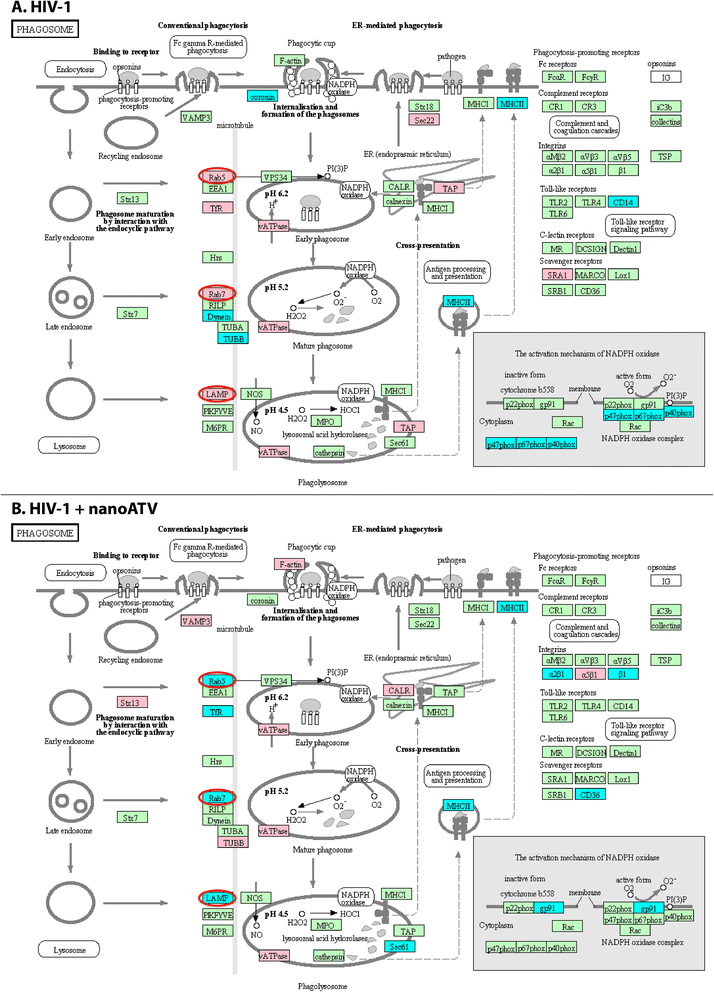
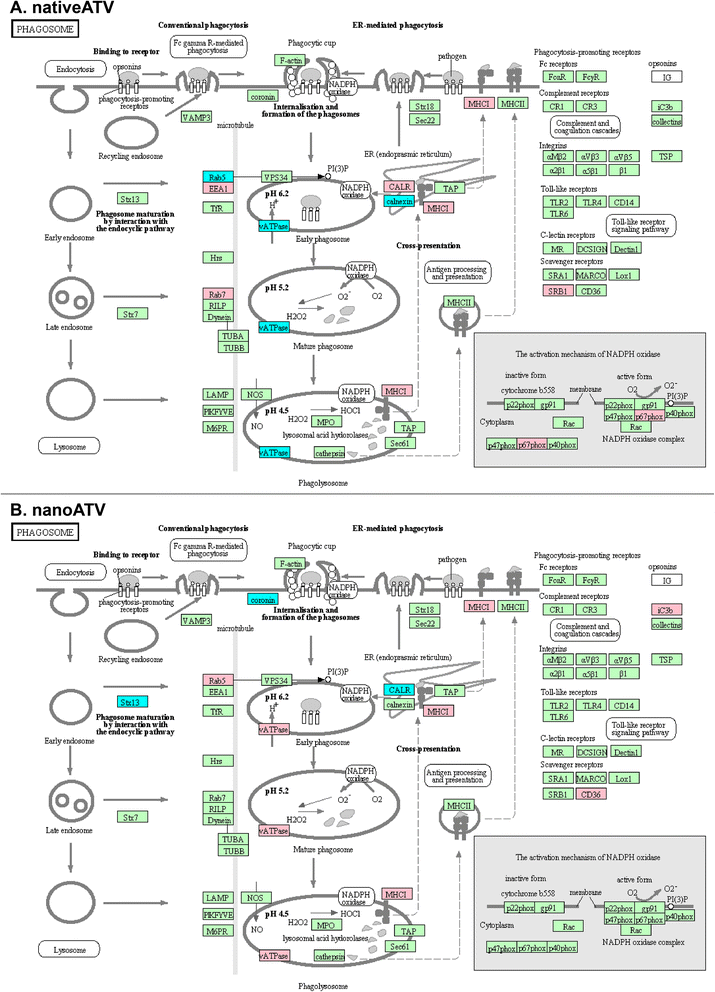
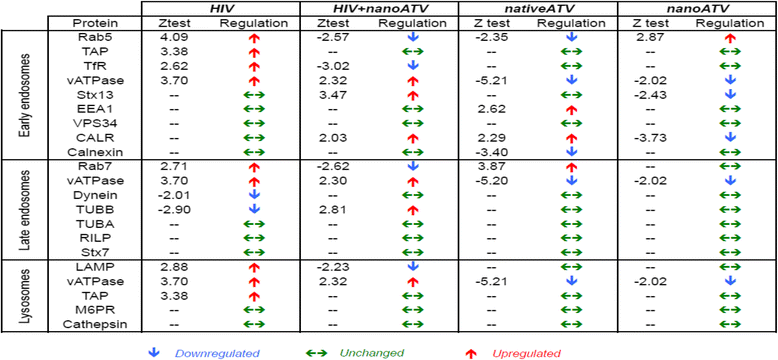
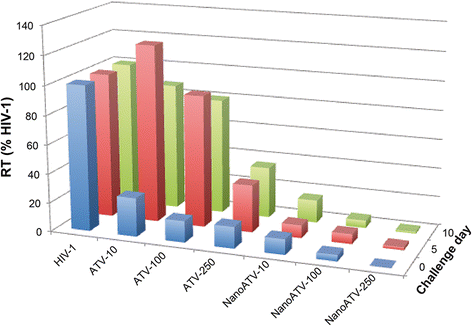
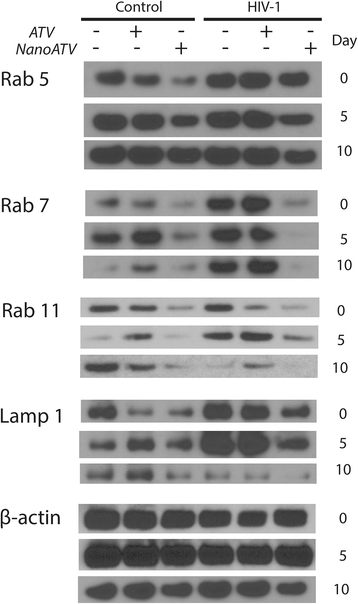
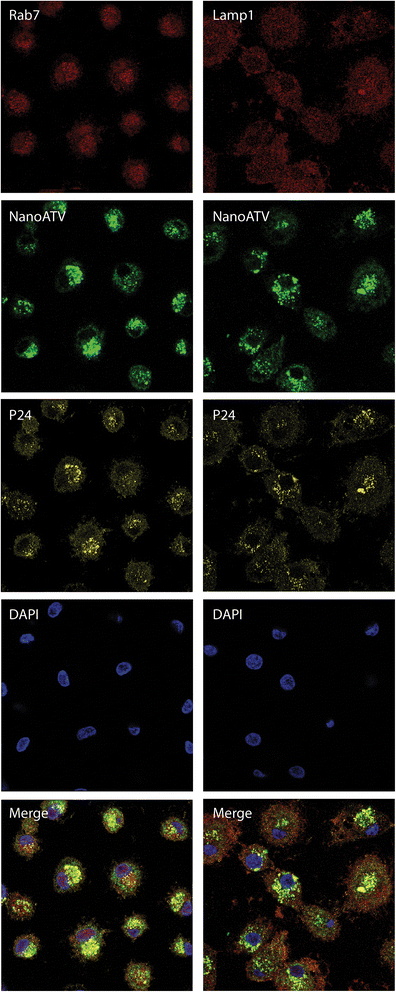
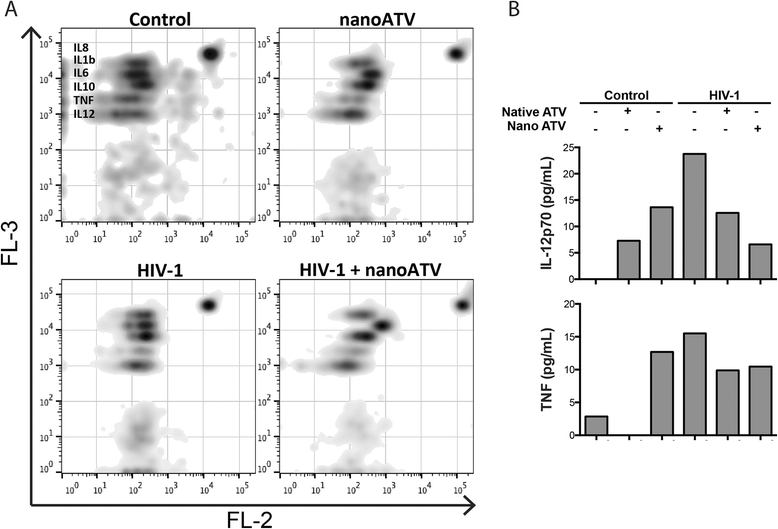
Similar articles
-
Endosomal trafficking of nanoformulated antiretroviral therapy facilitates drug particle carriage and HIV clearance.J Virol. 2014 Sep 1;88(17):9504-13. doi: 10.1128/JVI.01557-14. Epub 2014 Jun 11. J Virol. 2014. PMID: 24920821 Free PMC article.
-
Macrophage folate receptor-targeted antiretroviral therapy facilitates drug entry, retention, antiretroviral activities and biodistribution for reduction of human immunodeficiency virus infections.Nanomedicine. 2013 Nov;9(8):1263-73. doi: 10.1016/j.nano.2013.05.003. Epub 2013 May 13. Nanomedicine. 2013. PMID: 23680933 Free PMC article.
-
Nanoformulated antiretroviral drug combinations extend drug release and antiretroviral responses in HIV-1-infected macrophages: implications for neuroAIDS therapeutics.J Neuroimmune Pharmacol. 2010 Dec;5(4):592-601. doi: 10.1007/s11481-010-9198-7. Epub 2010 Mar 17. J Neuroimmune Pharmacol. 2010. PMID: 20237859 Free PMC article.
-
Strategies for overcoming resistance in HIV-1 infected patients receiving HAART.AIDS Rev. 2004 Jul-Sep;6(3):123-30. AIDS Rev. 2004. PMID: 15595429 Review.
-
Long-acting slow effective release antiretroviral therapy.Expert Opin Drug Deliv. 2017 Nov;14(11):1281-1291. doi: 10.1080/17425247.2017.1288212. Epub 2017 Feb 6. Expert Opin Drug Deliv. 2017. PMID: 28128004 Free PMC article. Review.
Cited by
-
Modulating cellular autophagy for controlled antiretroviral drug release.Nanomedicine (Lond). 2018 Sep;13(17):2139-2154. doi: 10.2217/nnm-2018-0224. Epub 2018 Aug 21. Nanomedicine (Lond). 2018. PMID: 30129397 Free PMC article.
-
Creation of a Long-Acting Nanoformulated 2',3'-Dideoxy-3'-Thiacytidine.J Acquir Immune Defic Syndr. 2017 Mar 1;74(3):e75-e83. doi: 10.1097/QAI.0000000000001170. J Acquir Immune Defic Syndr. 2017. PMID: 27559685 Free PMC article.
-
Emerging Nanomedicine Approaches to Targeting HIV-1 and Antiretroviral Therapy.Future Virol. 2016 Feb;11(2):101-104. doi: 10.2217/fvl.15.114. Epub 2016 Feb 3. Future Virol. 2016. PMID: 28123446 Free PMC article. No abstract available.
-
Defining the Innate Immune Responses for SARS-CoV-2-Human Macrophage Interactions.Front Immunol. 2021 Oct 4;12:741502. doi: 10.3389/fimmu.2021.741502. eCollection 2021. Front Immunol. 2021. PMID: 34671355 Free PMC article.
-
Cathepsin B Improves ß-Amyloidosis and Learning and Memory in Models of Alzheimer's Disease.J Neuroimmune Pharmacol. 2017 Jun;12(2):340-352. doi: 10.1007/s11481-016-9721-6. Epub 2016 Dec 13. J Neuroimmune Pharmacol. 2017. PMID: 27966067 Free PMC article.
References
Publication types
MeSH terms
Substances
Grants and funding
- R01 NS036126/NS/NINDS NIH HHS/United States
- P01 NS043985/NS/NINDS NIH HHS/United States
- P01 DA028555/DA/NIDA NIH HHS/United States
- P30 MH062261/MH/NIMH NIH HHS/United States
- P01 NS031492/NS/NINDS NIH HHS/United States
- P01 NS31492/NS/NINDS NIH HHS/United States
- 2R01 NS034239/NS/NINDS NIH HHS/United States
- P01 MH64570/MH/NIMH NIH HHS/United States
- P01 MH064570/MH/NIMH NIH HHS/United States
- R01 DA030962/DA/NIDA NIH HHS/United States
- R01 AG043540/AG/NIA NIH HHS/United States
- R01 NS034239/NS/NINDS NIH HHS/United States
- P01 NS43985/NS/NINDS NIH HHS/United States
- R01 NS36126/NS/NINDS NIH HHS/United States
LinkOut - more resources
Full Text Sources
Other Literature Sources
Medical
Research Materials
Miscellaneous

